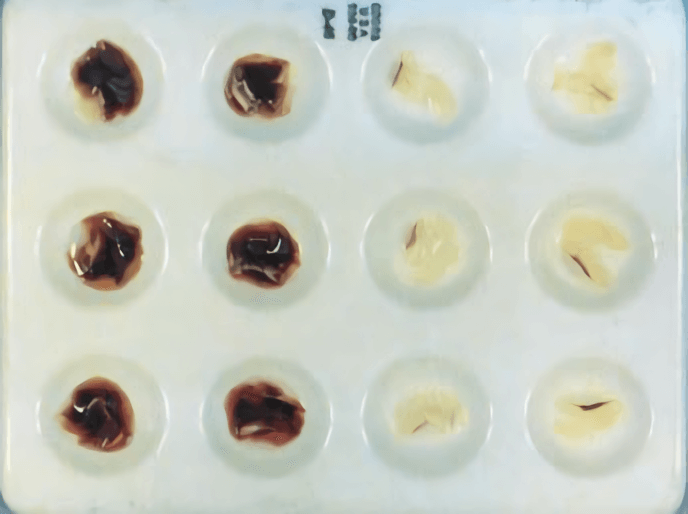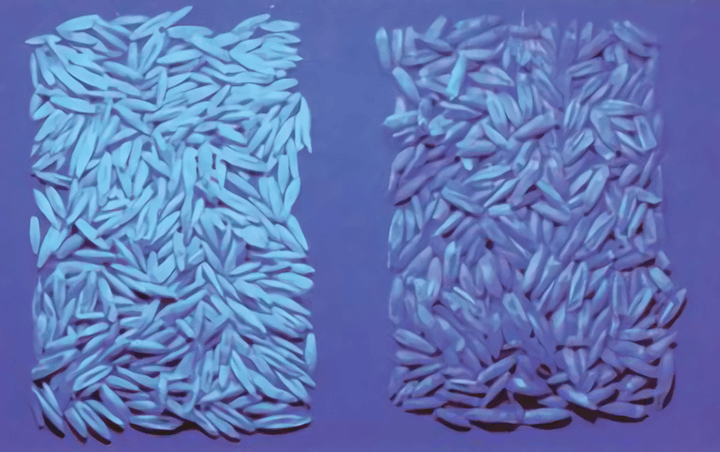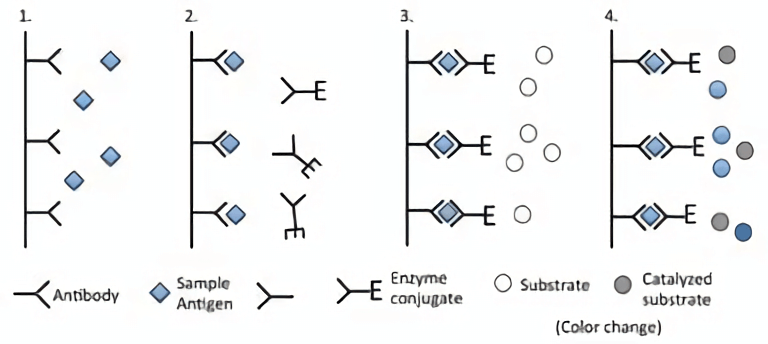Genetic purity testing refers to the analysis for detecting the existence of transgenic events or undesired genetic varieties in seeds. To maintain crop sustainability, a high level of genetic purity in crop varieties must be achieved and maintained in different environmental conditions and over generations. Thus, reliable seed genetic purity testing is critical for seed producers and plant breeders.
Lifeasible is a leading plant biotechnology company featured in plant genetic engineering and plant breeding. We provide our customers with a variety of methods for genetic purity testing to accommodate diverse research goals, including:
- Morphological analysis.
- Chemical tests. Some chemical tests rely on the presence of specific enzymes (e.g., peroxidase) (Figure 1) or fluorescence chemical compounds (Figure 2) within the seeds of different varieties. Other tests would require addition of chemical compounds (e.g., potassium hydroxide and hydrochloric acid) into the seeds to highlight seed features.
 Figure 1. The peroxidase test for soybean. Peroxidase positive (left two rows) and peroxidase negative (right two rows) seeds are displayed (Elias et al., 2012).
Figure 1. The peroxidase test for soybean. Peroxidase positive (left two rows) and peroxidase negative (right two rows) seeds are displayed (Elias et al., 2012).
 Figure 2. The fluorescence test for oats: Left: white (fluorescent) oats; right: yellow (nonfluorescent) oats (Elias et al., 2012).
Figure 2. The fluorescence test for oats: Left: white (fluorescent) oats; right: yellow (nonfluorescent) oats (Elias et al., 2012).
- DNA marker methods. Many DNA markers, such as restriction fragment length polymorphism (RFLP), random amplification of polymorphic DNA (RAPD), simple sequence repeats (SSR), and single nucleotide polymorphism (SNP), can be utilized for the identification of plant varieties.
- Protein-based isozyme electrophoresis. Generally, protein extracts from different seeds are subjected to electrophoresis on starch gels, followed by staining with enzyme specific dyes. The presence of isozymes is indicative of varietal differences.
- Two-dimensional electrophoresis-isoelectric focusing. The first dimension is called isoelectric focusing, where proteins are separated in a polyacrylamide gel with a pH gradient based on their isoelectric points. Then for the second dimension, the protein samples are run on a SDS-PAGE gel at a 90-degree angle against the first dimension electrophoresis, separated by molecular weight.
- Enzyme-linked immunosorbent assay (ELISA) testing. This method is based on antigen-antibody specific reactions. Detection of the sample antigen relies on an enzyme conjugate, which further catalyzes specific substrates and result in a color change (Figure 3).
 Figure 3. The principle of ELISA (Elias et al., 2012).
Figure 3. The principle of ELISA (Elias et al., 2012).
- Herbicide or insect tolerance tests. Seeds or seedlings are exposed to particular herbicides or insects; and their performances are monitored for the evaluation of their tolerance.
Lifeasible utilizes sensitive, sophisticated, and powerful technologies to detect the presence of transgenic events and crop varieties. With superior expertise and high-throughput capability, we are able to offer genetic purity test services with high quality, short turnaround at competitive rates.
Reference
- Elias, S. G., Copeland, L. O., Mcdonald, M. B., and Baalbaki, R. Z. (2012). Seed Testing: Principles and Practices. Michigan State University Press.
For research or industrial raw materials, not for personal medical use!
 Figure 1. The peroxidase test for soybean. Peroxidase positive (left two rows) and peroxidase negative (right two rows) seeds are displayed (Elias et al., 2012).
Figure 1. The peroxidase test for soybean. Peroxidase positive (left two rows) and peroxidase negative (right two rows) seeds are displayed (Elias et al., 2012).  Figure 2. The fluorescence test for oats: Left: white (fluorescent) oats; right: yellow (nonfluorescent) oats (Elias et al., 2012).
Figure 2. The fluorescence test for oats: Left: white (fluorescent) oats; right: yellow (nonfluorescent) oats (Elias et al., 2012). Figure 3. The principle of ELISA (Elias et al., 2012).
Figure 3. The principle of ELISA (Elias et al., 2012).